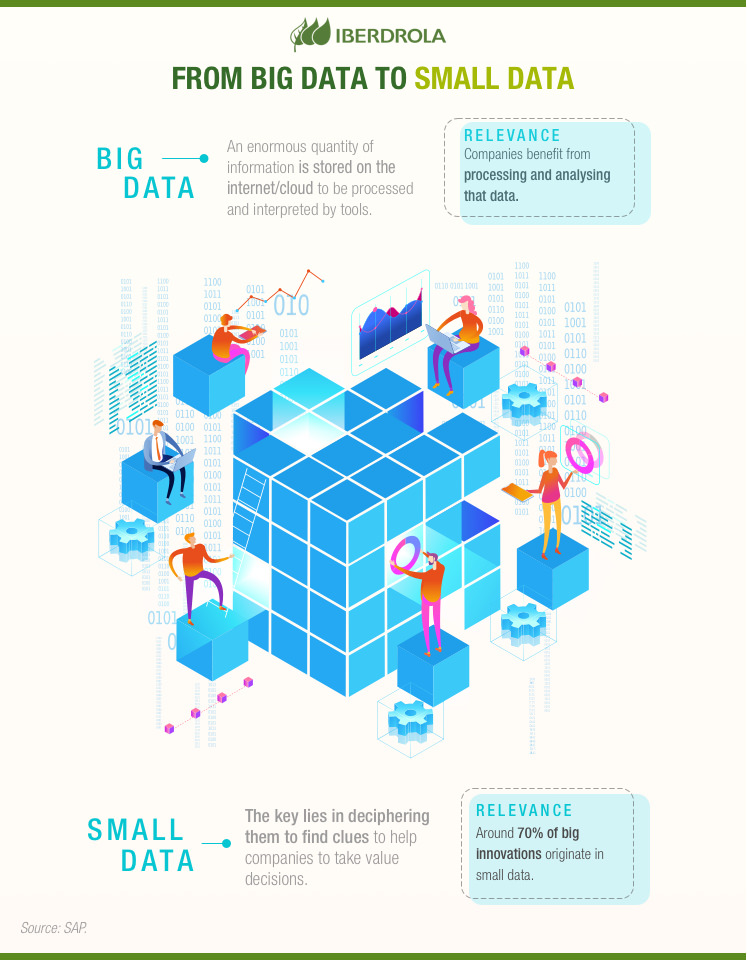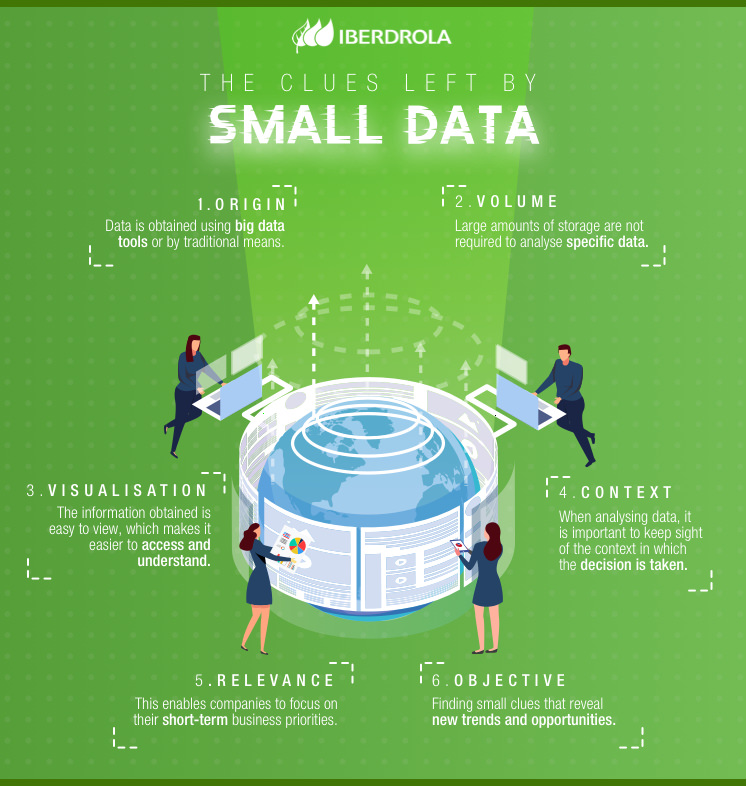All about small data
Small data: the data that makes the difference
Information is power. This has always been the case, but it is even more relevant now because of the data boom. When information is essential to stay ahead of customer demand, big data becomes small data, and it's worth its weight in gold. All brands want to get their hands on it.

WHAT IS SMALL DATA?
In the introduction to his book Small data: The Tiny Clues That Uncover Huge Trends, Danish expert Martin Lindstrom — who is responsible for coining the term and one of the world's leading marketing maestros in the world —, asks the following question: Are we aware of the sequence of small data we leave behind every day: the habits, gestures and preferences that together, show who we really are?
Things as apparently insignificant as chewing mint or liquorice gum give clues to our identity That's why, when we start looking at life through the small data lens, interesting titbits of information await. "However insignificant they may seem, everything in life tells a story", he reveals. According to marketing experts, these can be used to find enormous business opportunities.
DIFFERENCES BETWEEN BIG DATA AND SMALL DATA
What we call big data makes reference to a combination of data known as the three Vs: volume, variety and the velocity at which it is processed. In contrast, small data consists of analysing a set of data of small volume and format, which make these accessible, processable and understandable. This type of data is generally gathered using digital methods, but it can also be a physical process.
One example of how big and small data can coexist are the medicines sold with smart labels. The small data gathered by means of those labels provide information about location, seals, temperature and humidity information, etc., which, when processed with big data tools, can determine why a medicine has deteriorated, for example. This information is extremely valuable, in this case, to pharmaceutical companies.
While big data analyses behaviours and predictive patterns on a large scale, small data provides qualitative information. They are minute clues — sometimes unexpected — that brands use to pinpoint opportunities and convert them into innovative products and services to satisfy their customers' needs.

SEE INFOGRAPHIC: From big data to small data [PDF] External link, opens in new window.
SMALL DATA METHODOLOGY
Although small data started in the marketing world, it is increasingly important in all types of sectors and companies, regardless of size. In fact, according to Lindstrom, any company wanting to obtain strategic information from small data — both about customers and market trends — can do so taking these seven aspects into account:
Data collection. This is collecting small data from the consumers' surroundings.
Clues. This involves discovering emotions through observation. Nothing detected should be ignored as irrelevant.
Connection. Consumers have emotions that should not be undervalued to prevent possible consequences.
Correlation. This is a question of searching for evidence of changing trends or consumer behaviour.
Causality. This consists of putting yourself in consumers' shoes and asking what they want or feel about something.
Compensation. This involves identifying an unmet need or desire and determining the best way of satisfying it.
Concept. This consists of identifying a big idea to satisfy consumer wishes.
The main method is to analyse the simplest, most specific data, that affect the peculiarities of each business. This makes it possible to hone in on opportunities to achieve more efficient processes and customer relationships, going where figures cannot go and using big data to find the causes, reasons and emotions linked to customers.

SEE INFOGRAPHIC: The clues left by small data [PDF] External link, opens in new window.
BENEFITS OF SMALL DATA
What does this methodology achieve? The answer depends on the company's particular objectives, but the World Economic Forum points to the following:
- Identify diversity of customer demand.
- Determine what customers really need and anticipate their demands.
- Determine whether the market is large enough for a new product.
- Find out how to develop or expand in a specific market.
- Calculate how much customers are prepared to pay for a product.
- Improve the user experience by listening to consumers.
- Analyse how to improve products and/or sales by attending to local needs.
- Invest in innovation and improvements to internal processes.




